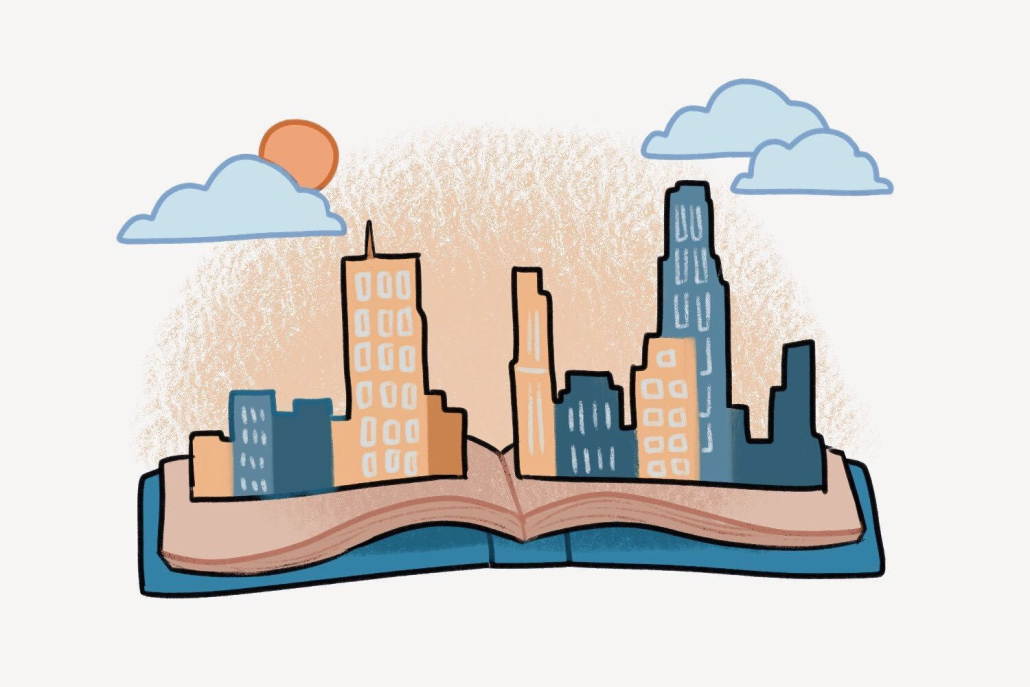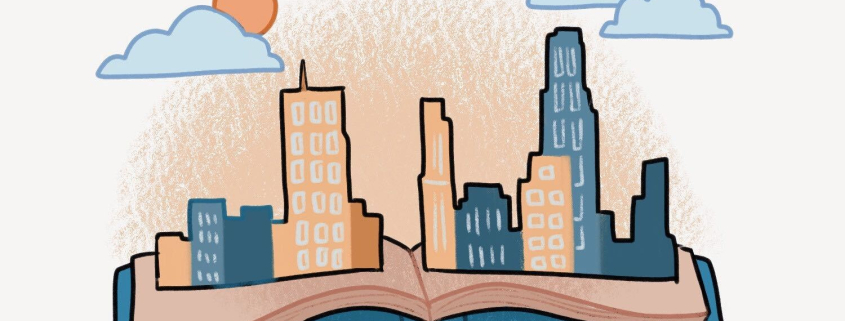Read a Book Today: Yes, people read in L.A.

I believed in “California Love” long before I heard the Spirit of Troy do their rendition. In thinking about what to write for this week, I realized that I’ve talked about a lot of things I love in this column. I love good food and travel, but I haven’t talked about something I love a lot: Los Angeles.
I’ve lived in this city my entire life like many other USC students. I associate L.A. not with Grauman’s and a place where the biggest movie stars live, but with Capri Sun summer days, early morning light and the 10 Freeway. I was thinking about it this week, as shows come back from their brief winter hiatus, and as awards season looms large, how L.A. is irrevocably linked to the media.
I’m frequently asked: “You’re a little bit in love with L.A., aren’t you?” Maybe a little bit. I love this city. I love driving in any direction and getting delicious food. I love Jonathan Gold, The Beach Boys and screaming Randy Newman’s “I Love L.A” with all the Lakers fans in the nosebleed seats after a win.
Of course, it has problems. As a commuter, I’ve spent more time on the aforementioned 10 Freeway than Taper. It can cost an arm and a leg for lunch, a one-bedroom apartment easily goes for $2,000 a month. Not to mention how the Santa Ana winds I’ve fallen asleep to for 21 years are more a nightmare than a lullaby. But honestly, I love this city, and you probably do too if you have chosen to spend your university career here. Welcome to the Rachel Bernstein tour of L.A. Sorry, I’ll be ignoring Google Maps, I like my route better.
Let’s take this route: in the summer of 2020, I was going on a lot of walks and the sky was clear because fewer cars were out. It was the sort of day that reminds you why you don’t leave this city even when it gives you a hundred reasons to pack your bags. I’d been wanting to read Joan Didion for a long time and was unsure of where to begin, so I just chose the one that was available through my library first (If you work at Libby, sponsor me, please.)
First available was “Blue Nights”, published in 2011, and it is about the death of Didion’s daughter. It’s a winding road of a book skipping from one timeline to the next, touching on subjects of aging and motherhood and regret. This book isn’t happy. Of course, it isn’t. It’s an account of a mother outliving her daughter. As a result, it feels more meditative than other Didion books. She talks about where she found home: in Brentwood, PCH, Hollywood and the story of picking up Quintana after she was born at St. John’s in Santa Monica.
In this book, I fell in love with Didion’s style. She sinks into her characters but still makes them human. But, it is in this book that, for obvious reasons, humanity is most apparent. She is dealing with a mother’s worst nightmare. The reader gets to see Didion in this book and as a result, see her Los Angeles: the Los Angeles post-Cielo Drive murders and when Malibu was still a little bit rustic.
Malibu was once rough around the edges, but it’s probably better known now as a place with many fires. If you’ve lived here for any amount of time and gone deep into the westside in October, you’ve seen some ash dusting your car. Taylor Jenkins Ried’s latest release, “Malibu Rising,” is all about this seemingly annual occurrence and about four siblings that plan to have an epic party. The primary storyline takes place in 1983 over 24 hours and people from the Sunset Strip receive invitations to this supposedly epic party that’s going to take place at this beautiful cliffside home steps from the beach. As you might imagine, it’s less about the party and more so about the people — where they come from, and how they ended up in this vintage version of the Malibu that you probably know better from your Instagram timeline. Of course, though, one of the main themes of “Malibu Rising” is coming home, which is also true in Brandy Colbert’s “Little & Lion,” which has been ever-present on my favorites shelf since it came out.
It talks about L.A., coming out, mental illness, a multiracial Jewish family and the power of love – no matter how cheesy that sounds. Our main character, Suzette, has come home from boarding school and fallen in love with the same girl that her brother is pining after. As you might imagine, that’s a less-than-ideal situation. Of course, it’s a very L.A. story as Colbert herself lives in the city and peppers in references to familiar locales.
This was an indulgent column because I always find myself wandering back to L.A. I didn’t want to initially because I thought it was a literary wasteland. A place that was only built for the studios and the people that inhabit them and bark into megaphones. I used to think that there was no way that literature could thrive here. How could it, with such a reputation for green juice and pilates? I thought this even though I saw the embarrassment of riches that we have with indie bookstores. Ones for children and ones exclusively for romance books and so many more.
I think it changed when I saw that you could write outdoors whenever you want, and I learned that authors I adored came to those indie bookstores for children and romance and they loved to talk about how they found home here. I knew this city needed to be loved on the page as much as New York and Chicago. So, I romanticize it now (like … in this column) and I love it for all of its messiness and its reputation. If you were to stop me and ask me to talk about the city, I’d tell you the lunch spots to go to (it doesn’t need to be a $14 sandwich to be good), the top-tier drive (Beverly Glen to Mulholland after it rains) and the L.A. books to read.

